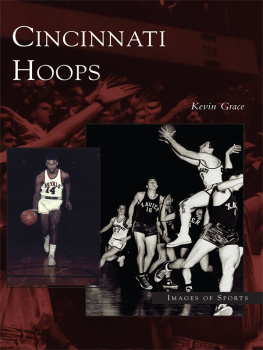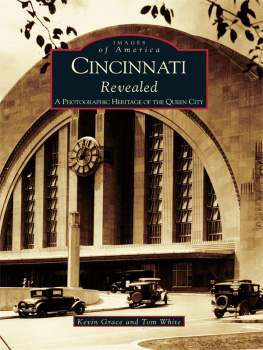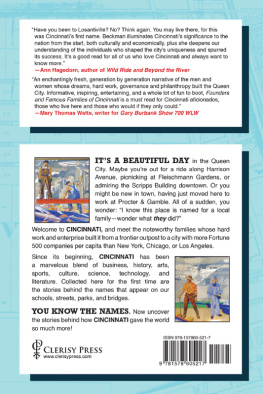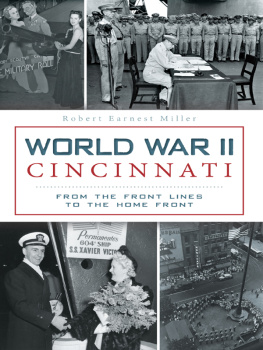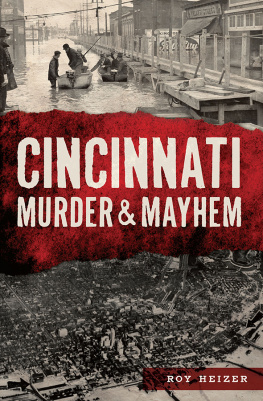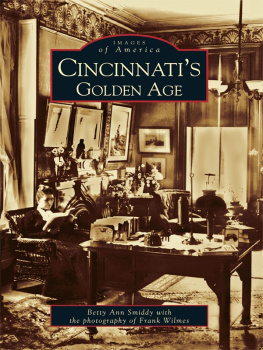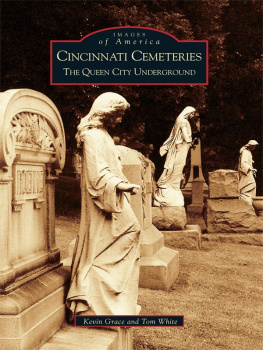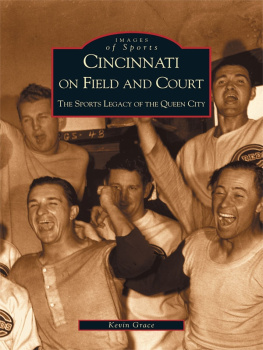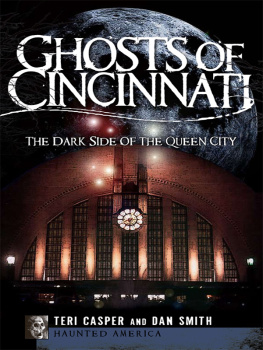

Published by The History Press
Charleston, SC
www.historypress.com
Copyright 2021 by Kevin Grace
All rights reserved
All images from the authors private collection unless otherwise noted.
First published 2021
e-book edition 2021
ISBN 978.1.43967.188.7
Library of Congress Control Number: 2020944151
print edition ISBN 978.1.46714.192.5
Notice: The information in this book is true and complete to the best of our knowledge. It is offered without guarantee on the part of the author or The History Press. The author and The History Press disclaim all liability in connection with the use of this book.
All rights reserved. No part of this book may be reproduced or transmitted in any form whatsoever without prior written permission from the publisher except in the case of brief quotations embodied in critical articles and reviews.
With appreciation for the storytellers who have enriched my life: Mary Grace, John Baskin, Ted Miller, Steve Hamm, Tom White, Mac Ward, Ellis Rawnsley, Eloise Rosser, Greg Hand, Jack Klumpe and Chris von Volborth.
CONTENTS
INTRODUCTION AND ACKNOWLEDGEMENTS
There is an old Siberian proverb I particularly like: If you dont know the trees, you may be lost in the forest, but if you dont know the stories you may be lost in life. I have no idea when or where I first heard it, but it has stuck with me. Through the decades, Ive found that it is the stories that make a community, bring us together and welcome strangers to the streets and neighborhoods. Every corner and building, everything we eat, every smell, every conversation, every person we seethere are stories to them all. This book tries to gather just a small part of Cincinnatis community story, its connection to books and reading.
When Fort Washington was established along the Ohio River in 1789 on the site of what is now Cincinnati, the intent was to provide a secured staging point for adventurous pioneers to settle the Northwest Territory. Fort Washington was situated opposite the Licking River on the Kentucky side of the Ohio, a small 15-acre carving from more than 300,000 acres that John Cleves Symmes purchased from the Continental Congress just a year prior to the establishment of the stockade. Though the fort was abandoned in 1803 for new quarters across the river in Newport, Kentucky, the settlers had indeed made their way to the immense rich land speculated by Symmes.
The soldiers in the fort entertained themselves as best they could in the humid summers in the Ohio Valley and the gray chill and drizzle of winter. They did this by putting on makeshift productions of dramas and comedies with which they were familiar, including a few interpretations of the Shakespeare canon, particularly King Lear, Julius Caesar and Macbeth, as well as A Midsummer Nights Dream and The Merry Wives of Windsor. Granted, these homespun performances were excerpts from the plays rather than fully mounted productions, but they give an indication of what the soldiers were familiar with enough to bring with them to the frontier. And this was all decades away from the considerable bardolatry that swept America and Britain in the mid-1800s. Of course, the soldiers also brought Bibles and collections of sermons as well, those filling any moral cavities that required attention.
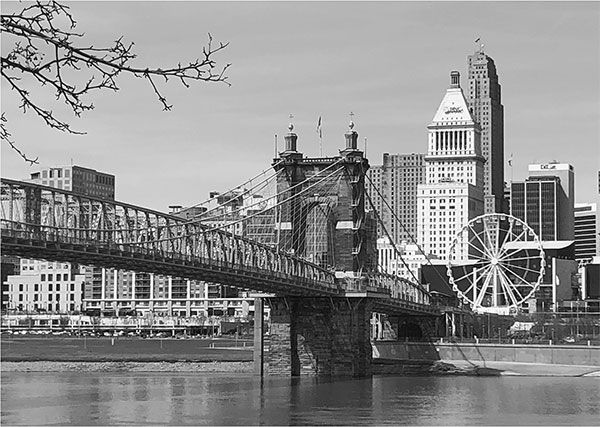
Cincinnati today on the Ohio River. From the hills rising on the Kentucky side of the river, the Cincinnati skyline provides one of the most spectacular views in urban America.
This literary baggage was akin to that brought by the settlers from the New England states, from the Mid-Atlantic, as well as Virginia and the Carolinas. At the beginning, the settlers were primarily Protestant, even the Irish and Germans who crossed the Atlantic and kept moving inland once they reached the shores of the United States. Their bookish possessions were few for the most part, but in addition to the Bible, there were rudimentary primers, John Bunyans The Pilgrims Progress and an almanac or two that were unpacked when they arrived.
The creation of schools in Cincinnati was not far behind. In 1791, James Lloyd, an Irish immigrant who had recently landed in the settlement, built a log cabin for a schoolhouse close to the river on what is now the end of Sycamore Street. Schools meant instruction. Instruction meant literacy, and literacy led to a sense of the real importance of the printed word. By the end of the nineteenth century, Cincinnatis claim to education fame would rest on its production of William McGuffeys Readers (in a distant second place, perhaps, was the citys embrace of physical education in the public schools, attributable to its German immigrants and the Turner Movement).
Just two short years after Lloyd built his schoolhouse, a newspaper was established in Cincinnati. The first issue of the Centinel of the North-Western Territory was published by William Maxwell on November 9, 1793. A native of New Jersey, Maxwell made his way to Pittsburgh and then came down the Ohio River with a printing press. Before he journeyed to Cincinnati, however, Maxwell first went to Lexington, Kentucky, where he began printing in the first days of 1793. Not endearing himself to the established newspaper already being printed in Lexington by John Bradford, the Kentucky Gazette, Maxwell ventured to Cincinnati and announced his intention:
The Printer of the Centinel of the North-Western Territory to the Public: Having arrived at Cincinnati, he has applied himself to that which has been the principal object of his removal to this country, the Publication of a Newspaper.
The Centinel was published weekly until June 1796, when it merged with Edmund Freemans Freemans Journal. The approaching nineteenth century would see a bonanza of newspapers in Cincinnati, more than one hundred different newspapers over the course of the 1800s: English, German and Hebrew; for Republican, Whig and Democrat; serving African American, German, Irish and Jewish citizens; for the likes of Catholics, Episcopalians, Baptists, Presbyterians and Methodists. The newspapers spoke to labor unions, businessmen, consumers, temperance advocates, abolitionists and anti-abolitionists. Depending on their owners and editorsand their customersthe newspapers editorials and articles railed and ranted, cajoled, praised, exhorted, explained, lied, advocated, opposed and informed. If a reader had a cause, there was a newspaper to support it. And if a rival newspaper opposed the cause, well, someones hash would be settled. Certainly, some of these publications seemed to go out of print almost as soon as the presses stopped rolling for the day, but there were many that lasted decades, even a century or more up to our own time. But all this journalism meant that Cincinnatians were avid (and opinionated) readers from the very beginnings of the city.
Cincinnati fast became a national center for publishing and the production of paper, type and ink. In an 1855 British publication, Trubners Bibliographic Guide to American Literature, the editors noted that Cincinnati had a burgeoning business profile that revolved around the printed word. With nearly 120,000 inhabitants, the city had twelve publishing houses, employing 700 workers. Many of these publishers included binders and booksellers as part of their commercial endeavors. Add to this the number of firms that cast type for the printing houses, the ink manufacturers that supplied the printers, the libraries and reading rooms and all the associated trades involved in putting a book or periodical in the hands of the reader, and by the 1880s there were hundreds of these businesses. It all became part of the citys profile of arts, culture and learning that led Cincinnati to be called the Literary Emporium of the West. It wasnt hyperbole in the least.
Next page


